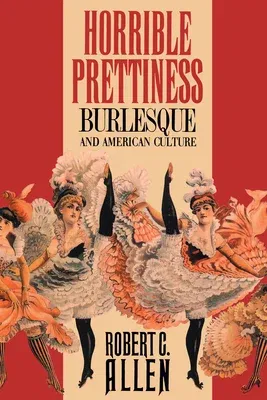Robert Allen
(Author)Horrible Prettiness: Burlesque and American CulturePaperback, 27 May 1991

Qty
1
Turbo
Ships in 2 - 3 days
In Stock
Free Delivery
Cash on Delivery
15 Days
Free Returns
Secure Checkout
Part of Series
Cultural Studies of the United States
Part of Series
Cultural Studies of the United States (Paperback)
Print Length
370 pages
Language
English
Publisher
University of North Carolina Press
Date Published
27 May 1991
ISBN-10
0807843164
ISBN-13
9780807843161
Description
Product Details
Author:
Book Format:
Paperback
Country of Origin:
US
Date Published:
27 May 1991
Dimensions:
23.62 x
15.49 x
2.41 cm
ISBN-10:
0807843164
ISBN-13:
9780807843161
Language:
English
Location:
Chapel Hill
Pages:
370
Publisher:
Weight:
566.99 gm

